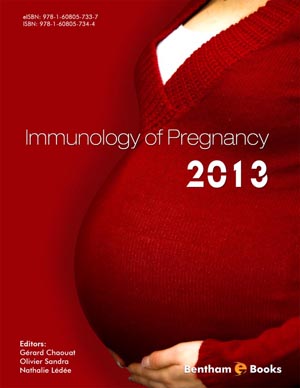Abstract
Regulatory T cells emerged in the last years as key players in allowing fetal survival within the maternal uterus. They were shown to be a unique subpopulation of T cells expanding during human and mice pregnancy. However, there is now consensus that surface phenotypes of human and mouse Treg cells are not exactly the same. While mice Treg cells seem to be homogenous and exhibit regulatory function; human FOXP3+ Treg cells show more heterogeneity, containing suppressor and non suppressor subsets.
Regulatory T cells accumulate in the uterus not only during pregnancy, but also every time the female becomes fertile. Their periodic accumulation is accompanied by matching fluctuations in uterine expression of several chemokines, and the participation of immunological factors which play a role in the recruitment and retention of regulatory T cells.
This process also requires the adequate role of additional factors, like galectin-1, responsible of an adequate induced tolerance during pregnancy. Similarly, CTLA-4 expressed on Treg cells was shown to up-regulate IDO expression on decidual and peripheral blood dendritic cells and monocytes by the induction of IFN-gamma production.
While in normal decidua a functionally unique regulatory lymphocyte subset exists, decidual tissues from women suffering from recurrent spontaneous abortions (RSA) show a decreased regulatory activity, associated with a harmful role of Th17+ cells in rejecting conceptus antigens, and a decreased expression of IDO.
We also discussed the classical and the trans-signaling pathway of IL-6 signaling in modulating the induction of FOXP3 in women suffering from RSA.
Keywords: Pregnancy, Miscarriage, Infertility, Mice Treg, Human Treg, FOXP3, Abortion-Prone Mice, Human abortion, Sex Hormones, Uterus, Placenta, Decidual Tissues, Fetal-Maternal Interface, Galectin 1, IDO, .NK cells, CD4 Regulatory Cells, CD8 Regulatory Cells.






















